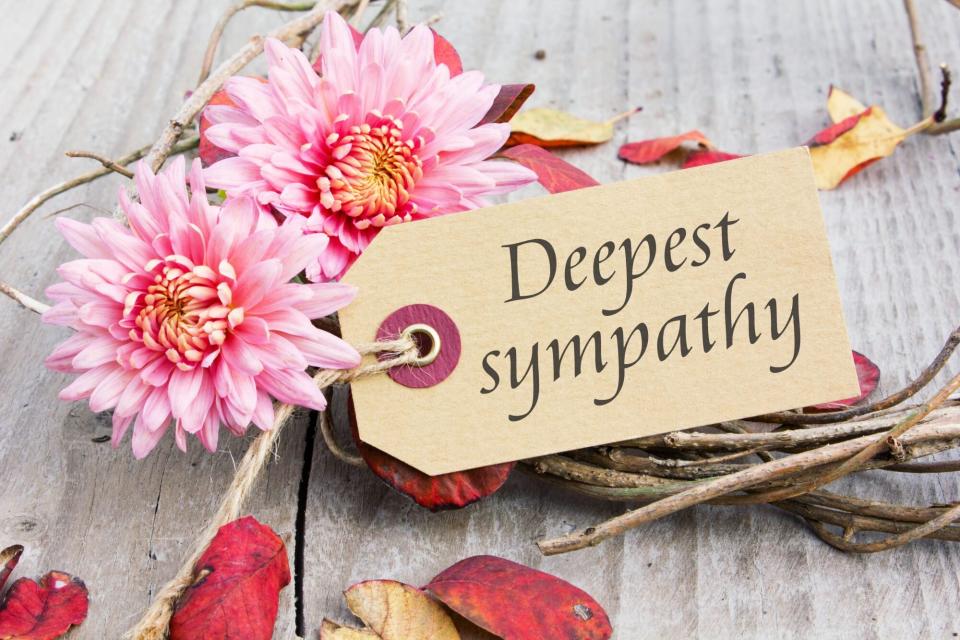The Six Etiquette Rules to Remember When Sending Your Condolences
When a loved one experiences loss, we instinctively want to reach out and comfort them. But expressing sympathy through a letter or a gift can leave you feeling uncertain. Is your sincerity coming across? Did you wait too long, or perhaps not long enough, before reaching out? Even though your compassion is genuine, it can be hard to know what to say and how to say it.
And while this is a bleak statistic, the reality is one in three Americans has lost someone due to COVID-19. It's been such a difficult year, and sending our condolences and offering support to those grieving is invaluable. To help you master this important skill, we talked to Dr. Nisha Gupta, assistant professor of psychology at the University of West Georgia, and Elaine Swann, etiquette expert and founder of the Swann School of Protocol, and asked them to share their professional advice on this delicate topic.
Related: The Best Ways to Teach Important Etiquette Principles to Your Kids

coramueller / Getty Images
Focus on the individual.
Both of our experts say their number one piece of advice is to avoid comparisons to your own life. "Express compassion, which is different from empathy," explains Dr. Gupta. "Empathy implies identifying with the feelings of another—which can lead to comparisons—while compassion is defined as feelings of care towards someone who is suffering." Swann adds, "Don't reference your own history with loss, because they're dealing with their own grief. Instead, share a memory or an endearing story about the person who has passed."
Be specific.
When sharing those memories, be specific. "If you don't have a personal memory tied to the person who has died, try to remember something that your friend or loved one said about them that can help them reminisce with fondness," says Dr. Gupta. And Swann suggests instead of saying "if there's anything I can do, let me know," you'll want to be specific. "Offer to pick the kids up from school, get somebody from the airport, or drop off a meal. Explain exactly how you can help, instead of leaving things open-ended," says Swann.
Avoid platitudes.
When in doubt, avoid clichés. Swann advises to stay away from phrases like "at least they're no longer in pain." Adds Dr. Gupta, "Avoid saying 'they are in a better place' or 'this was destiny.' These narratives can be triggering, so it's better to allow the person to create meaning from loss in their own way."
Email is acceptable, but no emojis.
If you can't send a written letter, email is acceptable and preferable to a text. "I think emails and letters are interchangeable these days, so I don't think sending an email diminishes the value of the sympathy as long as it comes from the heart," says Dr. Gupta. And Swann agrees that emails are fine if you can't mail a letter, but "avoid emojis or anything too casual."
If sending a gift, consider tokens of beauty.
"If you'd like to send a gift in addition to a letter, I find that sharing tokens of beauty in the midst of grief can be extremely healing. Flowers, books of poetry, or art are lovely gifts," says Dr. Gupta. And Swann suggests sending a personalized gift if you have an especially close relationship to the recipient. "A photo album, a blanket embroidered with a loved one's name or a piece of jewelry with significance like a birthstone or engraving are very thoughtful gifts," says Swann.
Don't worry about condolences being "too late."
Sending a sympathy letter isn't like sending a thank-you card. In fact, later can be better. "It's okay if time has gone by," says Swann. "In many cases, it's welcome to have time passed. Right after someone has experienced a loss, they receive a barrage of messages. But then gradually they don't hear from people as often. So to receive a note later can feel very comforting."

